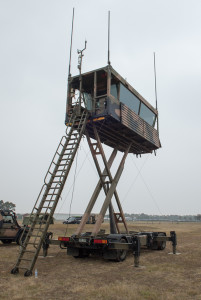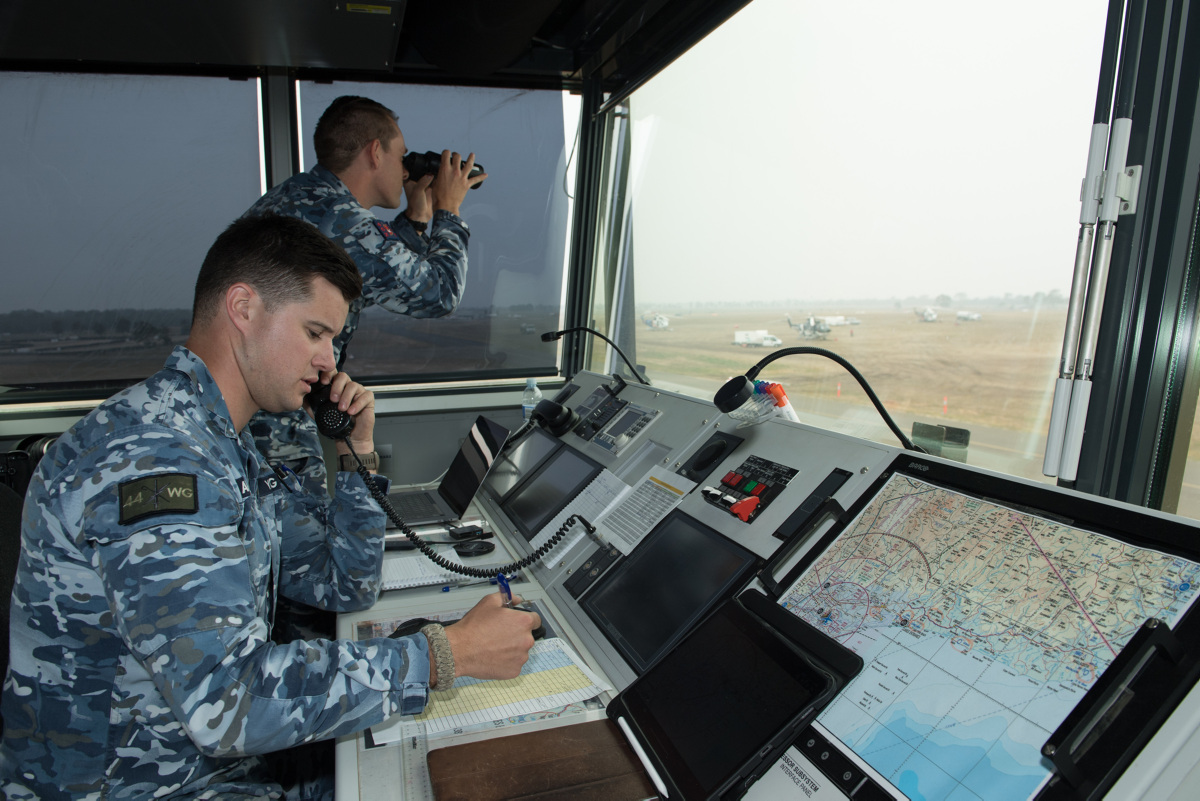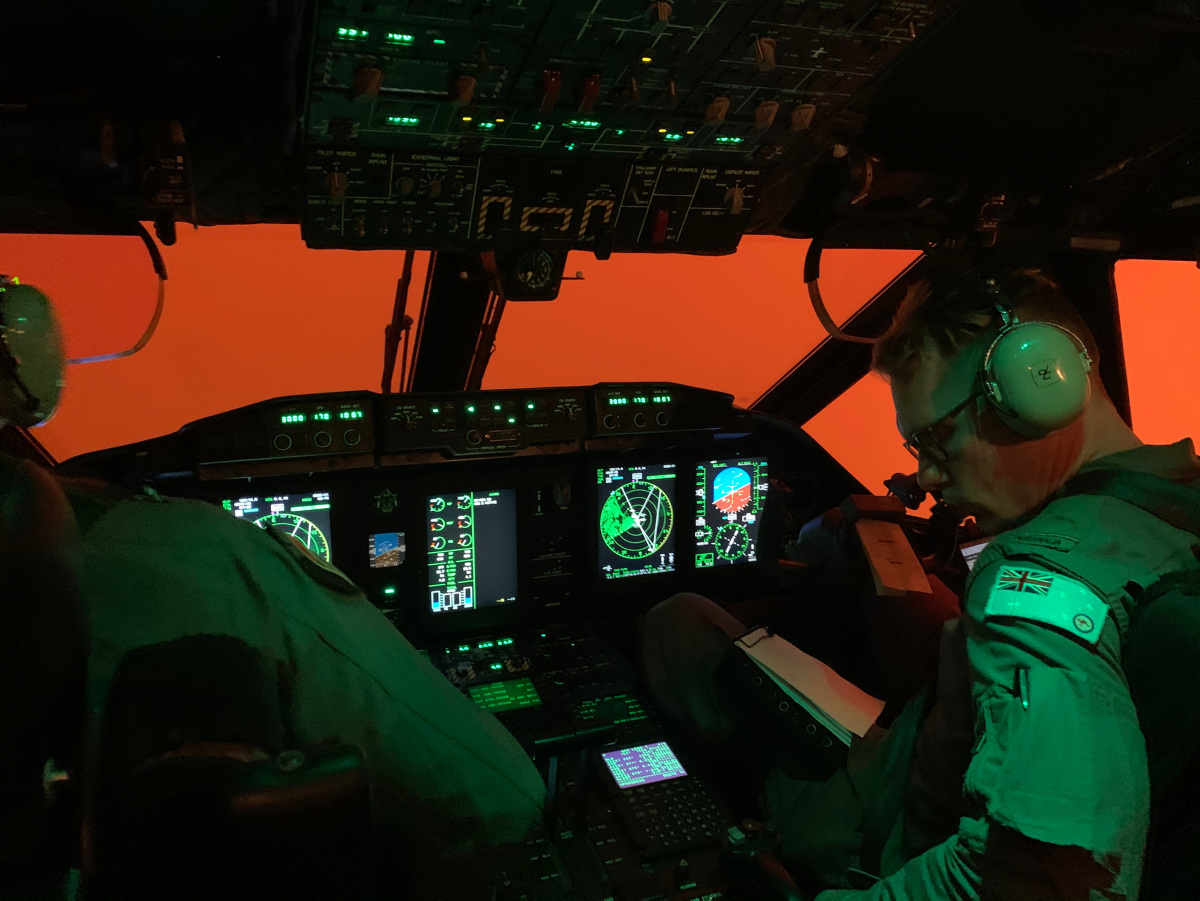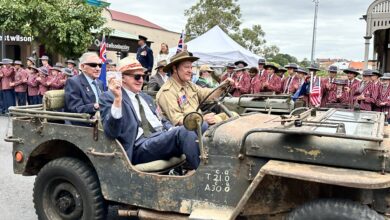A dramatic video has been released showing C-27J Spartan pilots out of Ipswich flying among an eerie red glow from a blanket of smoke as they attempted to land in a bushfire zone at Mallacoota, in Victoria.
The conditions were so poor that the Royal Australian Air Force plane was forced to abort the landing.
The first part of the video shows the Spartan flying in zero visibility conditions.
A C-27J Spartan pilot with No. 35 Squadron, Flight Lieutenant Sean Joyce, said the biggest challenge to the mission was the smoke from the bushfires, and the weather.
“Initially all the smoke that was being blown in from the fires in the vicinity of Mallacoota was making it very difficult to land at the airfield,” Flight Lieutenant Joyce said.
“A cold front has come through and brought in some associated cloud and rain as well, which has made it even more challenging.”
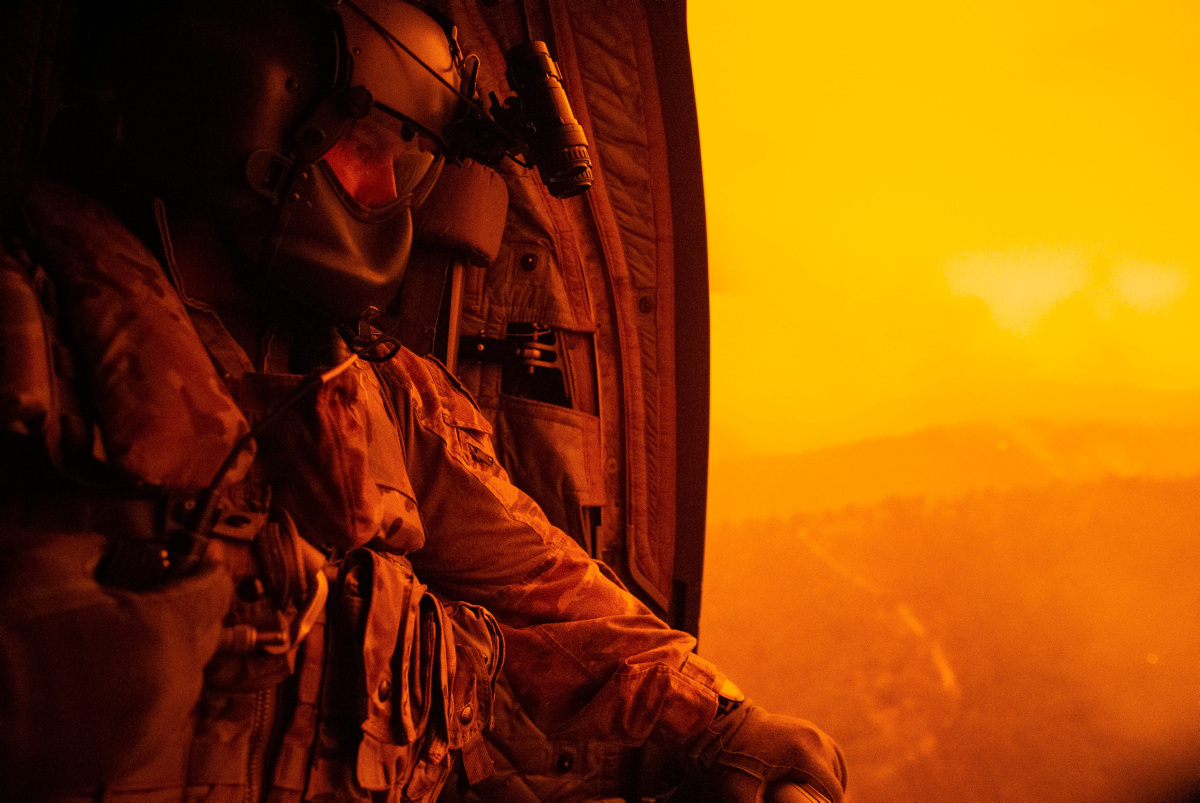
The view from an Australian Army CH-47F Chinook during a flight in Victoria to evacuate local civilian residents during Operation Bushfire Assist 19-20.
Even with a forecast of heavy smoke and poor weather, Spartan crews have launched on missions on the chance that visibility around Mallacoota would be good enough for them to safely land.
“We’ve been really well prepared – we built up as many different approach options for getting into Mallacoota that we could,” Flight Lieutenant Joyce said.
“On some days the visibility has been down to 500m or less, when you wouldn’t even attempt to get in.
“We were utilising all of the tools we have available to get in – and on some days, none of those will get us there.
“On other days, we can make it in, and we’ll work a full crew duty day just to get as much as we can in and out of Mallacoota.”
This included flying an extended crew duty day on 5 January, allowing an additional 90 people to be flown out of Mallacoota before bad weather closed in on the following days.
The second part of the video shows a RAAF C-130J Super Hercules attempting to land at Merimbula to deliver firefighters.
This mission was also forced to abort and land in Canberra instead.
Our people are highly trained & professional, but not always able to complete the mission on first try.
— Air Commander (@RAAF_ACAUST) January 6, 2020
This video shows how heavy smoke from bushfires has prevented some C27J & C130J flights from reaching #Mallacoota & #Merimbula #AusAirForce #AustralianFires #YourADF pic.twitter.com/PhNjNIUVHf
The first Spartan landed in Mallacoota on the evening of 3 January and evacuated 25 people, but heavy smoke thwarted the first attempts to land in Mallacoota on 4 January.
Improved conditions on 5 January allowed Defence aircraft to evacuate 381 people, with eight Spartan missions carrying out 243 people.
This included 73 children and 15 infants, along with 13 dogs and three cats.
As of 8 January, the Spartan detachment had carried 472 people and nearly 18 tonnes of cargo and supplies.
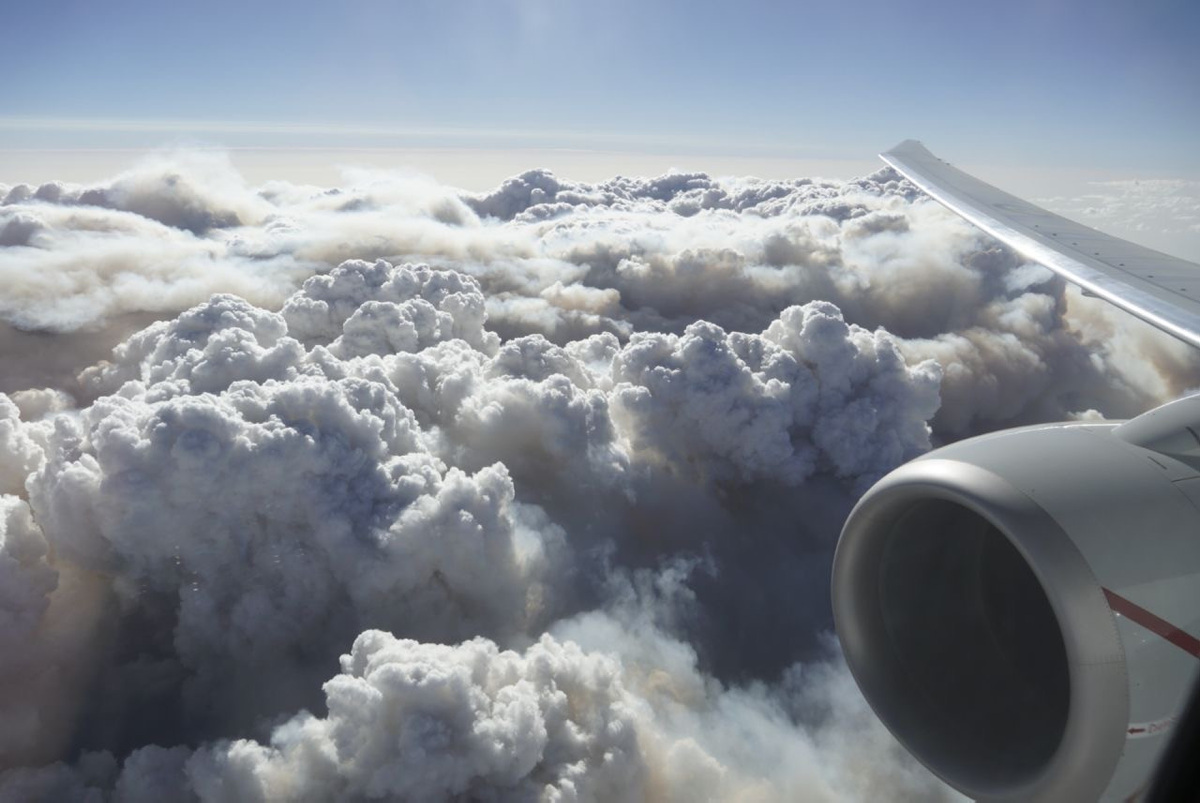
A Royal Australian Air Force P-8A Poseidon flies past a pyrocumulonimbus storm cloud forming over fire-affected areas near the NSW and Victoria border.
While the flight from Mallacoota to East Sale takes less than an hour, Spartan crews do what they can to make the trip enjoyable for passengers.
This has included providing children with lollies provided by the Australian Red Cross, along with poppers and colouring-in books donated by the local community.
“It’s pretty clear to us that they’ve been through a lot, but once they’re able to get on the plane and get airborne, and they know they’re being evacuated out to a safe part of the community, they’re pretty relieved,” Flight Lieutenant Joyce said.
“They’re really glad to get all the help.”
Flying into small regional airfields is a mission that plays to No. 35 Squadron’s strengths with the C-27J Spartan.
“At Mallacoota we have a smaller physical footprint than larger transports, so we can have multiple aircraft on the ground there at the same time with other assets like Chinooks and Black Hawks,” Flight Lieutenant Joyce said.
Mallacoota Airfield has two runways – one asphalt, the other unsurfaced – measuring approximately 1km long.
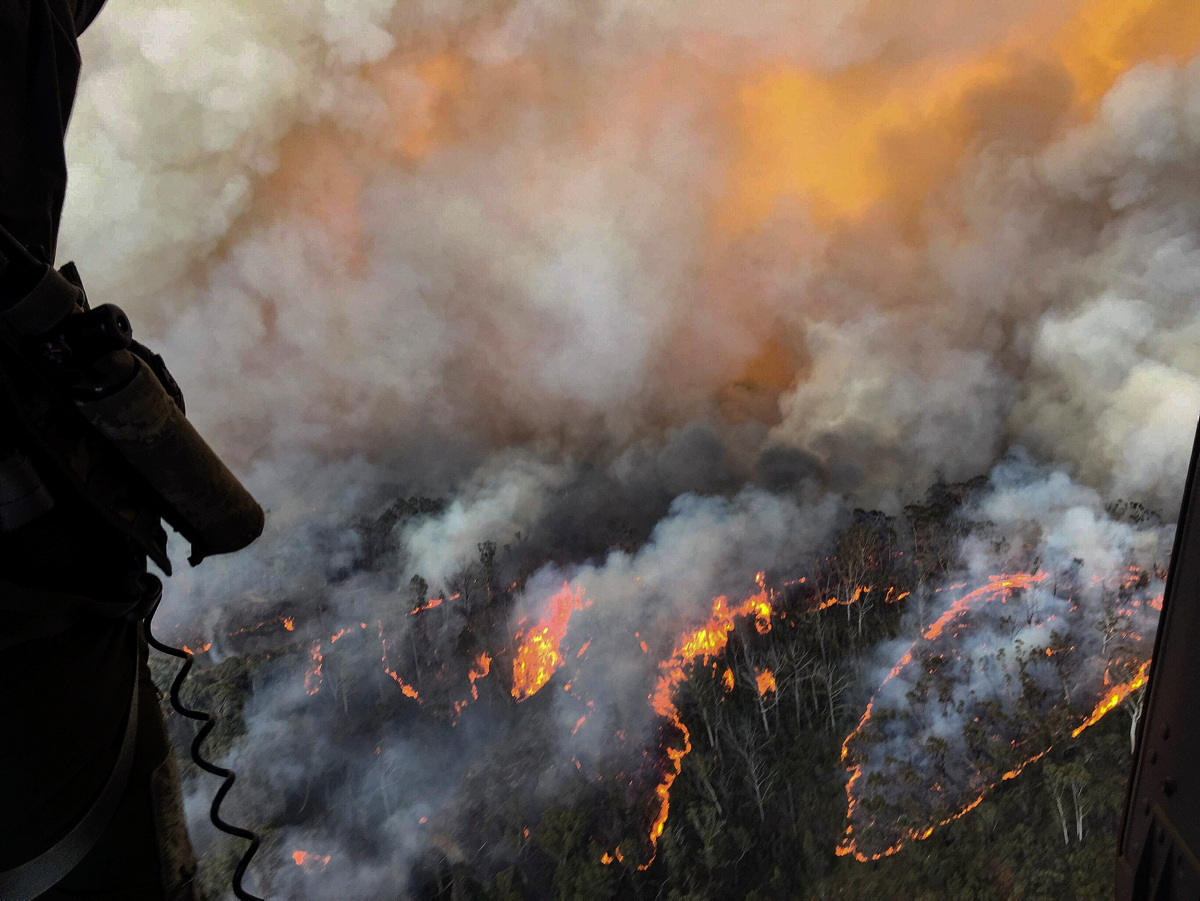
A Royal Australian Navy MRH-90 Taipan helicopter flies over the Grose Valley fire in the Blue Mountains area of Lithgow and Blackheath, New South Wales, to evacuate residents.
On these missions, the Spartan is able to take about 30 passengers or up to 2700kg of cargo.
No. 35 Squadron’s Detachment Commander at RAAF Base East Sale, Squadron Leader Mark Seery, said crews carefully managed the Spartan’s weight, fuel and tyre pressure when operating from Mallacoota.
“What you don’t want to do is land on a runway and put any holes in the surface or damage it in any way so that other aircraft can’t use it,” Squadron Leader Seery said.
“No. 35 Squadron has been landing on the unsurfaced dirt runway, and taking off on the sealed runway.
“Our light footprint has made us really effective in operating from Mallacoota.”
The Spartan’s work has been made easier by a No. 4 Squadron Combat Control Team delivered to Mallacoota on 5 January.
The team has helped coordinate passengers for the Spartans, provide weather and airfield information, and assess the condition of the runways.
“There are no weather reports available from Mallacoota, so a Combat Control Team from No. 4 Squadron has been providing us those reports each day,” Squadron Leader Seery said.
“This is the first time we’ve worked on such a large scale with other Defence units, especially a Combat Control Team and Mobile Air Load Team, on a disaster relief mission.”
Read also:
